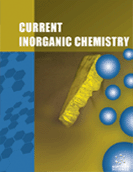Abstract
The usage of locally dense basis sets in the calculation of Electron Paramagnetic Resonance (EPR) hyperfine coupling constants is investigated at the level of Density Functional Theory (DFT) for two model systems of biologically important transition metal complexes: One for the active site in the compound 0 intermediate of cytochrome P450cam, [Fe(OOH)(SH)(en)2]+, and one for the active site in coenzyme B12, [Co(NH3)(CN)(en)2]+. The Fermi contact, spin-dipolar and second order paramagnetic spin-orbit coupling contributions to the hyperfine coupling tensors of the metal and the ligating ethylenediamine N atoms are calculated, and their dependence on the basis set for the remaining atoms are investigated. Core property basis sets are employed for the metals (aug-cc-pVTZ-Juc) and their equatorially coordinating N atoms (aug-cc-pVTZ-J or 6-31G-Juc analogues to the Pople style basis sets used for the remaining atoms), while smaller correlation-consistent or Pople style basis sets are used for the remaining, so-called “non-coupled'', atoms. Most of the investigated basis set combinations are found to give results which differ by less than 1% from the results obtained with core property basis sets on all atoms. We find thus for the cytochrome model system that using the small 6-31G(d) basis set on the non-coupled atoms together with core property basis sets on the Fe and N atoms gives essentially converged results. It is found to be mostly the second order paramagnetic spin-orbit interaction that demands the use of larger basis sets on the non-coupled atoms. If, however, an error of less than 0.5MHz is sufficient any basis set can be used for the noncoupled atoms. For the cobalt containing model system the 6-31G(2d) basis set generally gives results within 1% of the reference value.
Keywords: Aug-cc-pVTZ-J, cytochrome P450, EPR hyperfine coupling constant, locally dense basis set, vitamin B12.
 33
33

